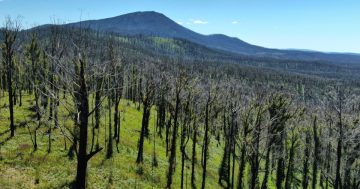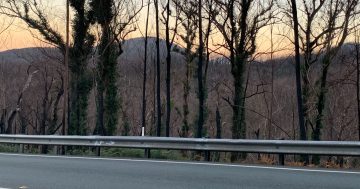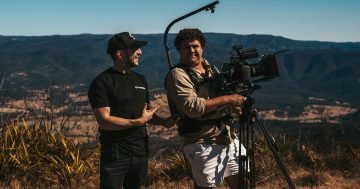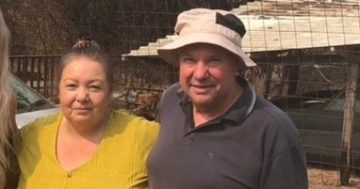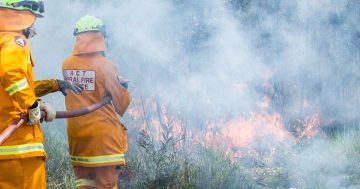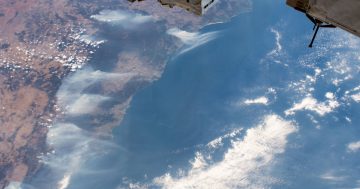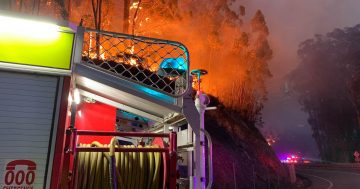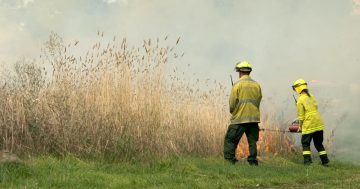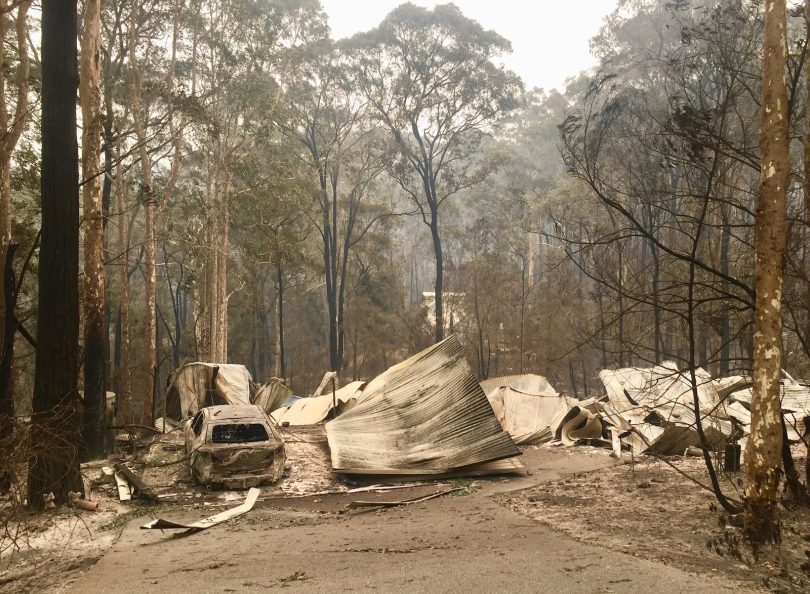
A new Australian National University report has found Indigenous people were disproportionally affected by the Black Summer bushfires of 2019-20. Photo: Lisa Herbert.
Indigenous Australians were disproportionally affected by the Black Summer bushfires of 2019-20, according to a report by the Australian National University’s Centre for Aboriginal Economic Policy Research (CAEPR).
The report found Indigenous and Aboriginal people in the ACT, NSW, Victoria and Jervis Bay were more than twice as likely to have been impacted by the bushfires than non-Indigenous people in the same area.
The report stated several reasons, including higher percentages of Indigenous people living in fire-affected areas, a lack of support for them during and following the fires, and increased stress due to their connection to the land and wildlife.
Indigenous man and president of the Mogo Village Business Chamber, Richard Adams, said the healing process for some wasn’t close to complete.
“Some people feel it more than others, some people may not have lost much in terms of items or possessions but are absolutely devastated by the loss of land,” he said.
“The more traumatic it is, the longer it takes people to recover, and for a lot of people this affected them deeply.”
The report’s Indigenous author, Bhiamie Williamson, was personally affected by the Black Summer bushfires and used his own experiences as inspiration for the document.
Williamson’s report makes specific mention of the lack of emergency planning for Indigenous people in NSW despite similar plans in place in Queensland and New Zealand.
The NSW Emergency Management Plan (EMPLAN) does not reference Indigenous or Aboriginal support. Similar plans in Queensland document specific attempts and plans to assist Aboriginal and Torres Strait Islander people in case of environmental emergency.
They detail the unique situation of First Nations people in Queensland and the needs, risks and hazards likely to be encountered by them in natural disasters.
Mr Adams said useful support during and after the fires varied.
“In terms of cultural support, there wasn’t enough. And what there was, wasn’t up to speed at all, but most other things went well and were good,” he said.
“There was a bit of a feeling of nothing is being done to stop this happening again.”
Some of the unique impacts on Aboriginal people include the destruction of their land, history and culture.
Richard said many Aboriginal people felt uncomfortable stepping forward for help, and there was some confusion as to what help they could get.
“It was pretty good here in Mogo, but many people felt uncomfortable coming forward and others were confused by who assists who in certain circumstances,” he said.
The report also found Indigenous people who reached out to relief and recovery services were treated poorly and inappropriately.
The report stated a relief worker told an Aboriginal elder “we’ve helped enough of your people today” after finding several Indigenous people deciding to stay instead of evacuating an East Gippsland home.
Mr Williamson said a lot of support for these areas fell on the shoulders of community-based and controlled organisations.
The report stated Indigenous people were often victims and first responders during the bushfires.
It stated a trust deficit between Aboriginal communities and the government currently existed. And as a result of recent bushfire impacts, this deficit would go nowhere without positive action from the government in supporting Indigenous people during natural disasters.












